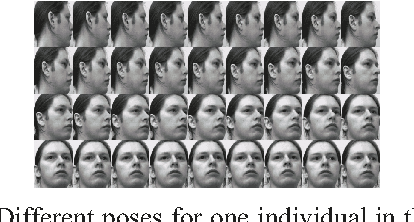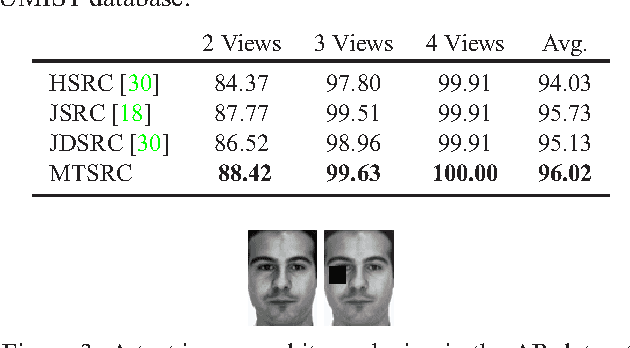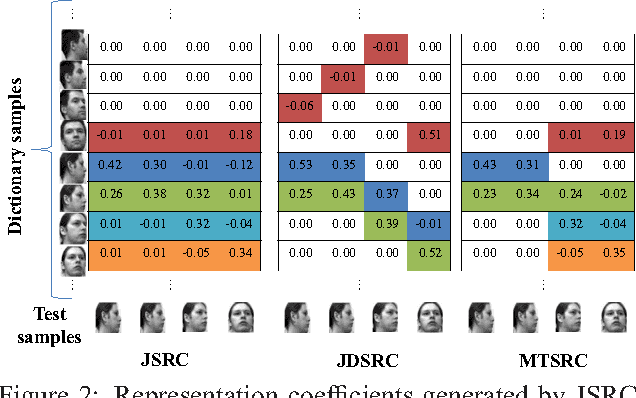Kenneth W. Jenkins
Kernel Task-Driven Dictionary Learning for Hyperspectral Image Classification
Feb 10, 2015

Abstract:Dictionary learning algorithms have been successfully used in both reconstructive and discriminative tasks, where the input signal is represented by a linear combination of a few dictionary atoms. While these methods are usually developed under $\ell_1$ sparsity constrain (prior) in the input domain, recent studies have demonstrated the advantages of sparse representation using structured sparsity priors in the kernel domain. In this paper, we propose a supervised dictionary learning algorithm in the kernel domain for hyperspectral image classification. In the proposed formulation, the dictionary and classifier are obtained jointly for optimal classification performance. The supervised formulation is task-driven and provides learned features from the hyperspectral data that are well suited for the classification task. Moreover, the proposed algorithm uses a joint ($\ell_{12}$) sparsity prior to enforce collaboration among the neighboring pixels. The simulation results illustrate the efficiency of the proposed dictionary learning algorithm.
Quality-based Multimodal Classification Using Tree-Structured Sparsity
Mar 08, 2014



Abstract:Recent studies have demonstrated advantages of information fusion based on sparsity models for multimodal classification. Among several sparsity models, tree-structured sparsity provides a flexible framework for extraction of cross-correlated information from different sources and for enforcing group sparsity at multiple granularities. However, the existing algorithm only solves an approximated version of the cost functional and the resulting solution is not necessarily sparse at group levels. This paper reformulates the tree-structured sparse model for multimodal classification task. An accelerated proximal algorithm is proposed to solve the optimization problem, which is an efficient tool for feature-level fusion among either homogeneous or heterogeneous sources of information. In addition, a (fuzzy-set-theoretic) possibilistic scheme is proposed to weight the available modalities, based on their respective reliability, in a joint optimization problem for finding the sparsity codes. This approach provides a general framework for quality-based fusion that offers added robustness to several sparsity-based multimodal classification algorithms. To demonstrate their efficacy, the proposed methods are evaluated on three different applications - multiview face recognition, multimodal face recognition, and target classification.
* To Appear in 2014 IEEE Conference on Computer Vision and Pattern Recognition (CVPR 2014)
 Add to Chrome
Add to Chrome Add to Firefox
Add to Firefox Add to Edge
Add to Edge